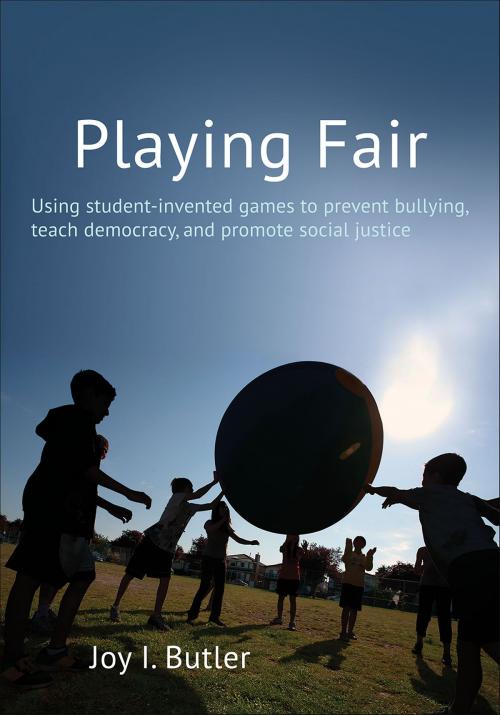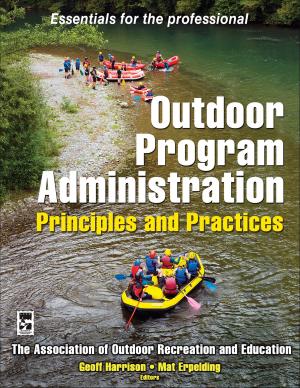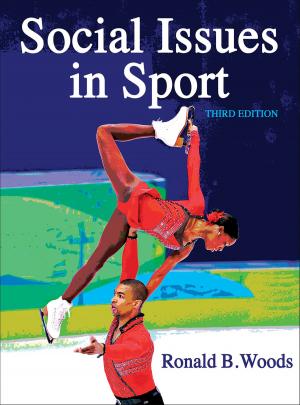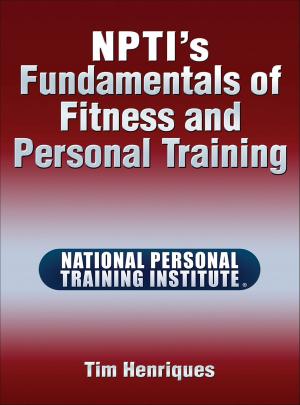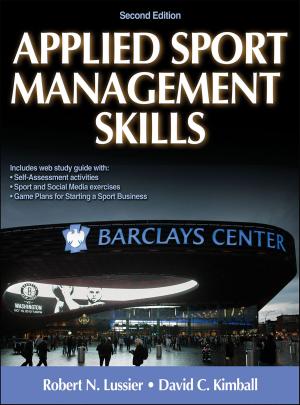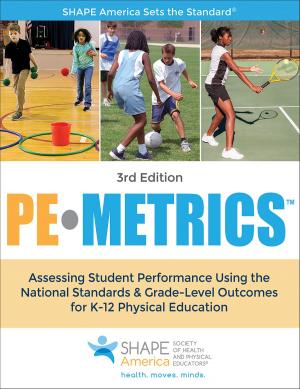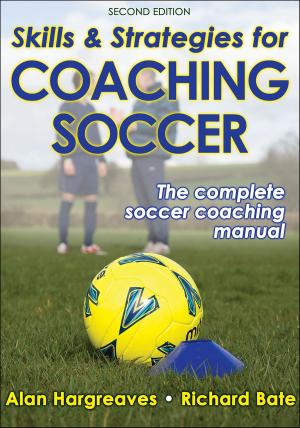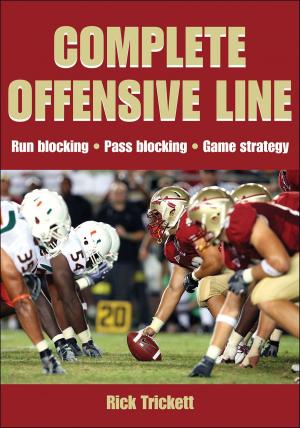Playing Fair
Nonfiction, Reference & Language, Education & Teaching, Teaching, Physical Education, Kids, Sports and Recreation| Author: | Joy I. Butler | ISBN: | 9781492585398 |
| Publisher: | Human Kinetics, Inc. | Publication: | July 5, 2016 |
| Imprint: | Human Kinetics, Inc. | Language: | English |
| Author: | Joy I. Butler |
| ISBN: | 9781492585398 |
| Publisher: | Human Kinetics, Inc. |
| Publication: | July 5, 2016 |
| Imprint: | Human Kinetics, Inc. |
| Language: | English |
Games, in the right environment and with the right guidance from teachers, offer students opportunities to grow as independent problem solvers, decision makers, and team players. In addition, students can learn a host of other skills, strategies, and concepts that can transfer not only to other games but also to other life situations.
Playing Fair shows teachers how to create the learning environments typical of the Teaching Games for Understanding (TGfU) approach. This text takes the TGfU approach to a new level, incorporating the development of group processes and democratic behaviors that promote personal growth as well as the ability to thrive in group situations.
Antisocial behavior and bullying are ongoing problems in schools today. The concepts and practical ideas for lessons offered in Playing Fair address those problems proactively as students learn about conflict resolution, inclusion, democratic decision making, leadership, and bullying. The topics in this book come together in developing the cognitive, psychomotor, and affective domains, all primary goals of the physical education curriculum.
A Peek Inside Playing Fair
Playing Fair offers teachers these benefits:
• Practical classroom stories showing teachers how they can apply theory and learning situations to their own students and school context
• Activities that include modifications so teachers can apply the games with students of all developmental levels
• Learning checks consisting of questions for teachers to ask their students in order to assess their learning
• Key Concepts, a special element that calls out important concepts for readers
The first part of the book covers the process of inventing games and the democratic principles involved, how social justice can be taught and learned through games, understanding the TGfU classification system, curriculum design, and pedagogical principles. The remaining 10 chapters show how to implement the concepts presented in the earlier chapters. Readers learn how to invent and play a variety of games: target games, striking games, net/wall games, and invasion games.
What Your Students Will Gain
Implementing the principles advocated in this book will help learners in these ways:
• Better understand and appreciate the constructs of game play through external and internalized schemas
• Transfer concepts, strategies, tactics, and skills within and among game categories
• Improve their performance and become more engaged in their own learning
• Become more self-effective and empowered as they understand and value the processes of decision making
• Understand how democracy works from the bottom up
• Grasp that democracy is tenuous, that it breaks down in the absence of active social justice, and that we all have a role and responsibility in constructing and reconstructing it, moment by moment
Playing Fair will help students gain a better understanding of themselves and others, and it will make them sensitive to issues such as social justice, collaboration, negotiation, inclusiveness, and fairness. Students will learn to make informed decisions in the context of their invented games and to make intentional, reasoned inquiries about game situations, which they can then transfer to other areas of their lives.
Bringing Systemic Change and Facilitating Personal Growth
This book will help teachers and coaches teach the principles of game play and those of democracy and citizenship in concrete ways. They will contribute to systemic change in the school culture—a culture in which students learn to create their own games and gamelike situations wherein concepts, skills, and strategies can be learned in context through a process called democracy in action.
The bottom line is simple. Playing Fair brings out inherent qualities that have been part of games since the beginning of humankind: play, fun, challenge, inventiveness, teamwork, friendship, and quick thinking. Along the way, games offer opportunities for moral and spiritual development—and the games in Playing Fair offer all that and more.
Games, in the right environment and with the right guidance from teachers, offer students opportunities to grow as independent problem solvers, decision makers, and team players. In addition, students can learn a host of other skills, strategies, and concepts that can transfer not only to other games but also to other life situations.
Playing Fair shows teachers how to create the learning environments typical of the Teaching Games for Understanding (TGfU) approach. This text takes the TGfU approach to a new level, incorporating the development of group processes and democratic behaviors that promote personal growth as well as the ability to thrive in group situations.
Antisocial behavior and bullying are ongoing problems in schools today. The concepts and practical ideas for lessons offered in Playing Fair address those problems proactively as students learn about conflict resolution, inclusion, democratic decision making, leadership, and bullying. The topics in this book come together in developing the cognitive, psychomotor, and affective domains, all primary goals of the physical education curriculum.
A Peek Inside Playing Fair
Playing Fair offers teachers these benefits:
• Practical classroom stories showing teachers how they can apply theory and learning situations to their own students and school context
• Activities that include modifications so teachers can apply the games with students of all developmental levels
• Learning checks consisting of questions for teachers to ask their students in order to assess their learning
• Key Concepts, a special element that calls out important concepts for readers
The first part of the book covers the process of inventing games and the democratic principles involved, how social justice can be taught and learned through games, understanding the TGfU classification system, curriculum design, and pedagogical principles. The remaining 10 chapters show how to implement the concepts presented in the earlier chapters. Readers learn how to invent and play a variety of games: target games, striking games, net/wall games, and invasion games.
What Your Students Will Gain
Implementing the principles advocated in this book will help learners in these ways:
• Better understand and appreciate the constructs of game play through external and internalized schemas
• Transfer concepts, strategies, tactics, and skills within and among game categories
• Improve their performance and become more engaged in their own learning
• Become more self-effective and empowered as they understand and value the processes of decision making
• Understand how democracy works from the bottom up
• Grasp that democracy is tenuous, that it breaks down in the absence of active social justice, and that we all have a role and responsibility in constructing and reconstructing it, moment by moment
Playing Fair will help students gain a better understanding of themselves and others, and it will make them sensitive to issues such as social justice, collaboration, negotiation, inclusiveness, and fairness. Students will learn to make informed decisions in the context of their invented games and to make intentional, reasoned inquiries about game situations, which they can then transfer to other areas of their lives.
Bringing Systemic Change and Facilitating Personal Growth
This book will help teachers and coaches teach the principles of game play and those of democracy and citizenship in concrete ways. They will contribute to systemic change in the school culture—a culture in which students learn to create their own games and gamelike situations wherein concepts, skills, and strategies can be learned in context through a process called democracy in action.
The bottom line is simple. Playing Fair brings out inherent qualities that have been part of games since the beginning of humankind: play, fun, challenge, inventiveness, teamwork, friendship, and quick thinking. Along the way, games offer opportunities for moral and spiritual development—and the games in Playing Fair offer all that and more.
